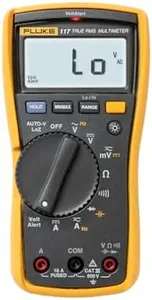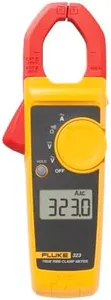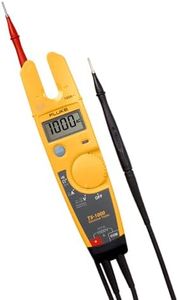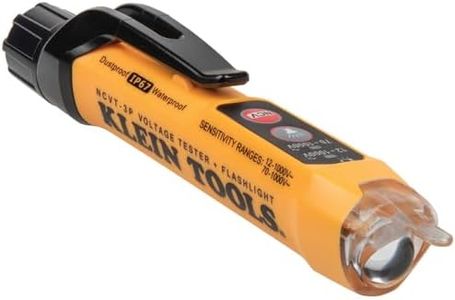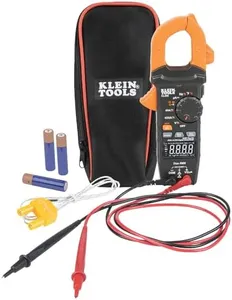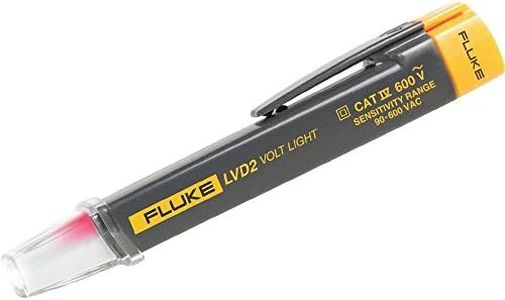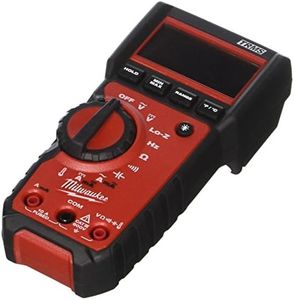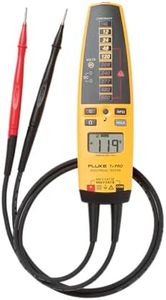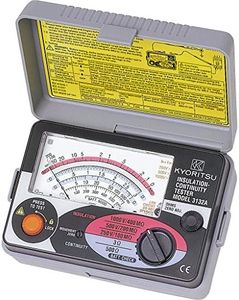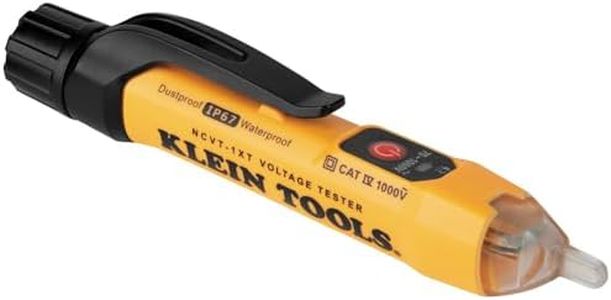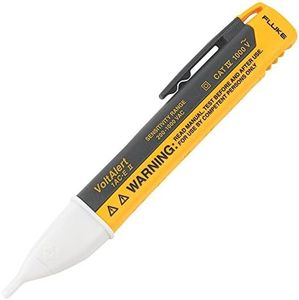We Use CookiesWe use cookies to enhance the security, performance,
functionality and for analytical and promotional activities. By continuing to browse this site you
are agreeing to our privacy policy
10 Best Voltage Testers
From leading brands and best sellers available on the web.Buying Guide for the Best Voltage Testers
When choosing a voltage tester, your main goal is to pick a tool that reliably and safely helps you determine the presence or absence of electrical voltage. Voltage testers are essential for DIYers, electricians, and anyone dealing with electrical repairs or installations. The right voltage tester for you depends on the kinds of electrical systems you'll be working with, how often you will use the device, and the features that suit your level of skill and safety expectations.Type (Contact vs. Non-Contact)This refers to whether the tester needs to touch the wire or outlet to detect voltage. Non-contact voltage testers can sense voltage just by being near the wire, which means they are safer and very easy to use for quick checks. Contact testers need to touch the conductor and might be better for more precise measurements but require more care. If you want quick and safe checks, choose a non-contact type. For more detailed work, especially if you are comfortable with handling electricity, a contact tester could be better.
Voltage RangeThis describes the range of voltages the tester can safely and accurately detect. Testers are usually rated for certain voltages, like 12-600 volts. Some are meant for low-voltage circuits, like automotive or electronics work, while others can handle high household or industrial voltages. If you plan to work only on home wiring, make sure the range covers typical household voltages. If you work with both lower and higher voltages, choose a tester with a broader range.
Indication MethodVoltage testers can indicate presence of voltage using lights, sounds, or a digital display. Simpler models use just a light, while others beep or show voltage values on a small screen. If you want quick confirmation, a light or sound is enough. If you need more information, like the actual voltage level, a tester with a digital readout is better. Pick based on how much detail you need for the tasks you do.
Safety RatingTesters come with a safety category rating (like CAT II, CAT III, or CAT IV) that explains how much and what kind of electrical energy the tester can safely handle. Higher CAT numbers mean better protection for tougher conditions. For home use, a CAT II or III rating is usually enough; for industrial or commercial work, CAT III or IV offers more safety. Always choose a tester with a safety rating appropriate for where you'll use it.
Built-in FeaturesSome voltage testers have additional features like flashlight tips, dual-range detection, or the ability to check for both voltage and continuity. These features can add convenience but might not be necessary for everyone. If you do a variety of tasks or often work in dimly lit areas, extra features can be helpful. Consider your regular jobs to decide which, if any, built-in features you need.
Ease of Use and ErgonomicsThis is about how comfortable the tester is to hold and operate, and how easy it is to interpret results. Some testers have large buttons, clear indicators, and shapes that are easy to grip, which can make them better for frequent or extended use. If you'll use the tester often, choose one that's comfortable and straightforward to operate.
